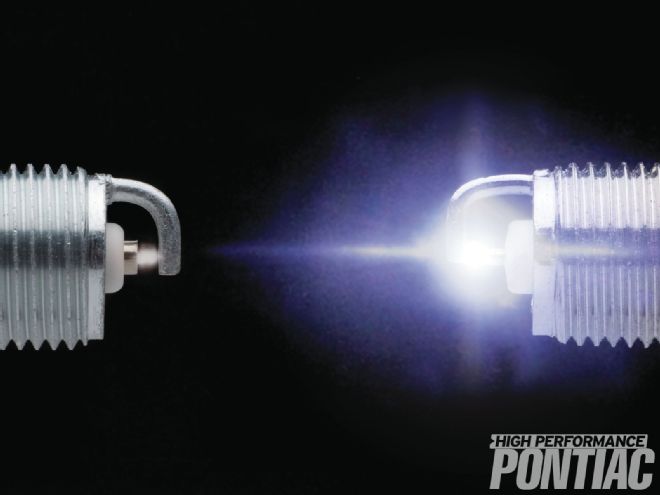
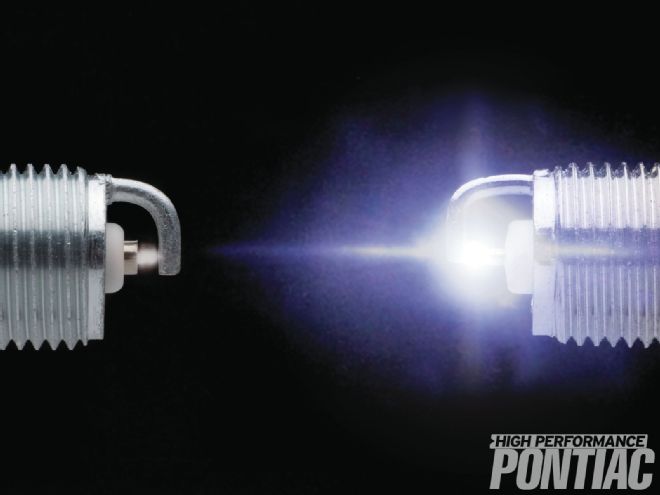
If you've ever used a modern ignition box to send more spark to your combustion chambers, you’re likely familiar with the term capacitor discharge (CD). Pontiac offered a system as an option in the ’60s.
In a CD ignition, a circuit charges a high-voltage capacitor, and at the exact instant of ignition, the system stops charging the capacitor, allowing it to discharge its output to the coil. The amount of energy the CD system can store for spark use is usually around 50 megajoules, or more.
In contrast, most Pontiacs—classic or late model—from the factory feature an inductive discharge (ID) ignition. This system relies on electric inductance at the coil to produce high-voltage current to the spark plugs as the magnetic field collapses when the current-to- primary coil winding is disconnected. This system produces approximately 25 megajoules at low engine speed and drops off quickly as engine speed increases.
Both systems are affected by parasitic loss; that is, energy is lost as it travels from the coil through the wires to the plugs. This even occurs in coil-near-plug systems, like those found in many late-model Pontiacs.
What if the capacitor-discharge system was based in the spark plug itself, so that its high voltage made its way directly into the combustion chamber without parasitic loss? That’s the science behind Pulstar, a new breed of spark plugs from manufacturer Enerpulse.
“Pulstar incorporates Pulsed Power Technology, which stores power for a relatively long period of time (i.e., microseconds compared to nano-seconds) for the discharge, and then releases the stored power in an instantaneous pulse of energy,” says Pulstar’s vice-president, Stephen Smith. “Installing Pulstar plugs with Pulsed Power Technology in a high-performance engine helps to increase torque and horsepower (while being driven aggressively), and also helps to improve gas mileage during normal driving,”
Pulstar plugs do this by dramatically improving ignition velocity. That’s the growth of the combustion flame front in the cylinder on top of the piston, the speed of which determines the amount of energy released and torque created from the fuel.
“The greater the efficiency of spark transfer of ignition energy, the larger the spark. The larger the spark, the faster the fuel is ignited and the more efficiently your engine can operate to produce horsepower or, inversely, better fuel economy,” he says.
“With increased cylinder pressure, the piston is pushed down with more force, which, in turn, generates more torque to the crankshaft, more response from the throttle, and more power to the wheels,” he adds.
Enerpulse advertises gains of up to 8 hp/10 lb-ft when installed in vehicles using traditional spark plugs. To see if these claims are true, we ordered a set of Pulstar plugs (PN AD1i, MSRP $103.60 per set of eight/$12.95 each), which arrived direct from Enerpulse in a few days.
We used a ’95 Firehawk as our test subject. Check out the results in our photos and captions.
Conclusion
Enerpulse’s Pulstar plugs are based on capacitor-discharge technology, which was invented in the late 19th century. Unlike capacitor-discharge ignition boxes, however, Pulstar plugs incorporate the capacitor as close to the combustion chamber as possible. The company’s claims of improved horsepower and torque are verified in our independent tests. Though we didn’t also test Pulstar plugs on a traditional Pontiac engine, Pulstar states that power gains will be approximately the same.
For Pontiac hobbyists looking for power gains on the cheap, Pulstar plugs are a great choice. There’s another benefit to them, too. If you’re trying to stay out of modified class in non-Concours car shows or compete with the winning edge in stock-appearing drags, they’re a stealth mod that may be overlooked by judges and tech inspectors.
Prior to establishing a baseline, LT1 performance specialist Justin Davis of Davis’ F-Body installed a set of eight ACDelco 44LTS plugs (MSRP: $23.20 per set, $2.90 each) and disconnected the negative battery cable for about 10 minutes. This forced the Firebird’s engine-control module (ECM) to reset. Once 12V power is reintroduced to the ECM, it will “learn” the new plugs. Then Dane Fuller of Prove It Dyno strapped into the driver seat and performed multiple dyno pulls. His best pull was 271.25 rwhp/314.25 rwtq.
Here’s a close-up view of the Pulstar plug. It installs like a traditional spark plug, and is available in various heat ranges for naturally aspirated, boosted, and juiced applications.
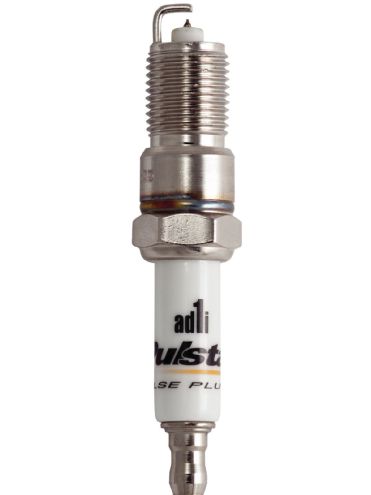
Davis installs new Pulstar plugs to replace the ACDelco units and resets the ECM again.
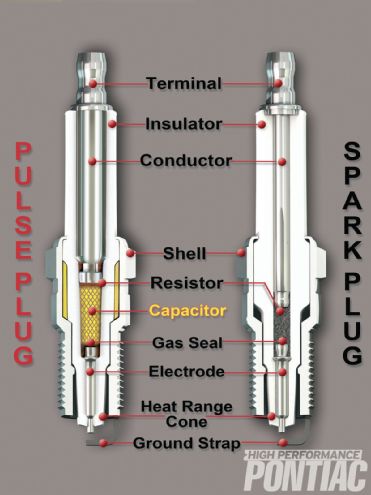
Here’s a close-up view of the Pulstar plug. It installs like a traditional spark plug, and is available in various heat ranges for naturally aspirated, boosted, and juiced applications.

This cutaway illustration reveals the Pulstar plug’s patented internal capacitor, which a traditional plug does not have.

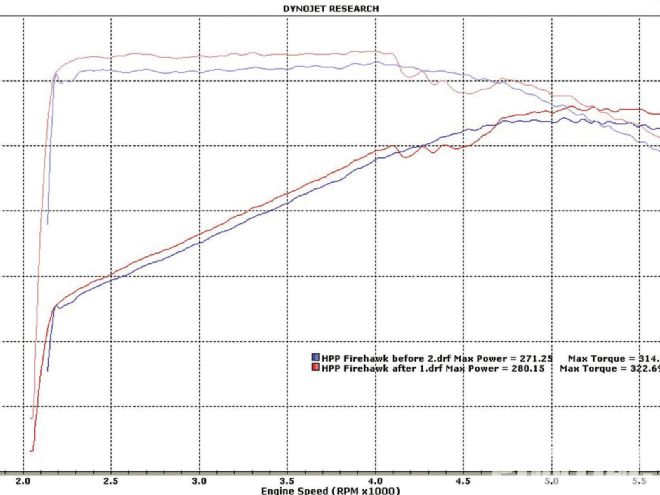 This dyno graph charts the performance changes: peak improvements of 8.9 rwhp and 8.44 rwtq. The average gains across the 2,200- to 5,200-rpm power band were 4.23 rwhp and 6.55 rwtq.
This dyno graph charts the performance changes: peak improvements of 8.9 rwhp and 8.44 rwtq. The average gains across the 2,200- to 5,200-rpm power band were 4.23 rwhp and 6.55 rwtq.